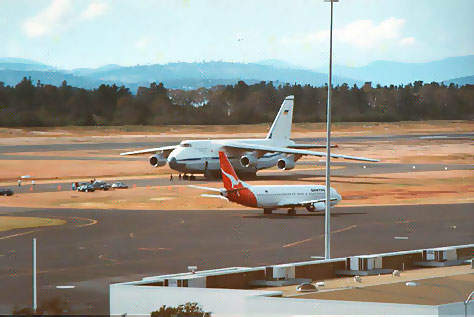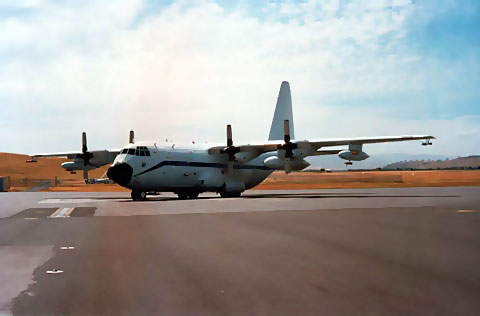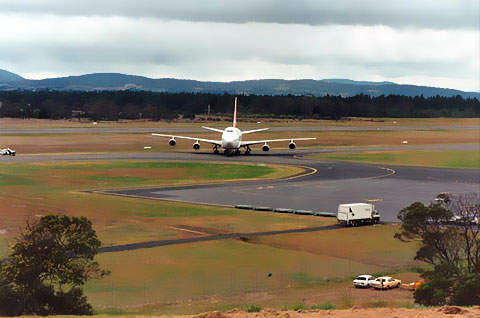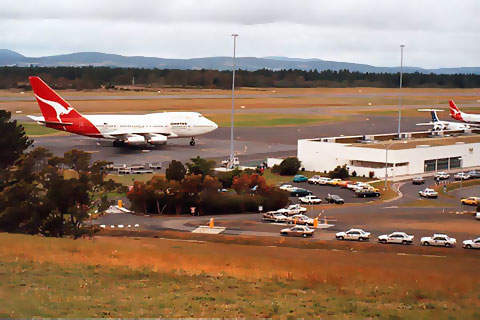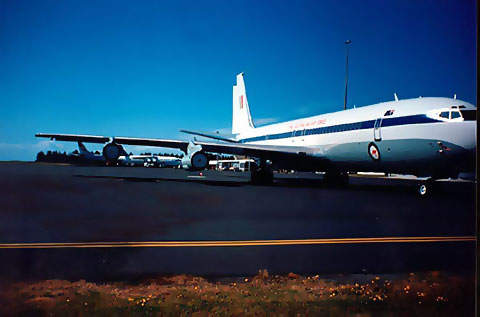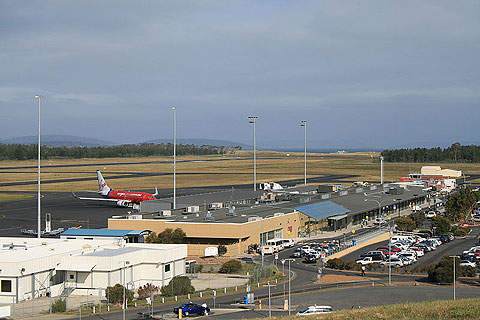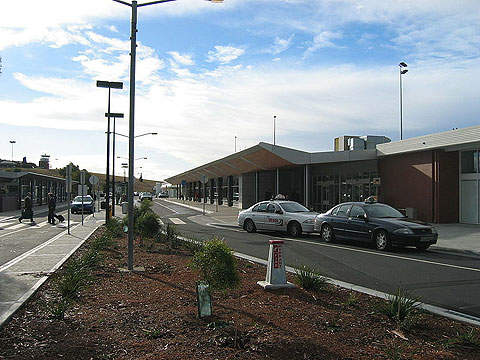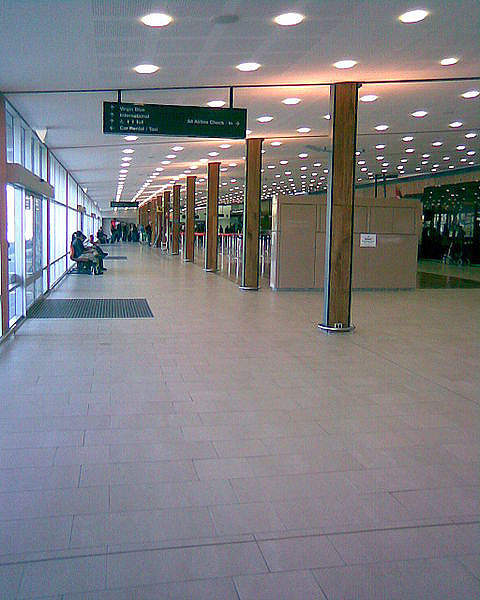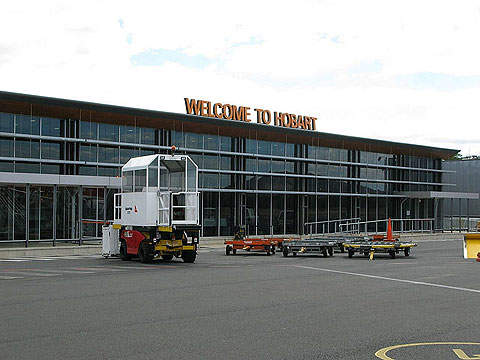Hobart International Airport is situated in Cambridge, Tasmania, Australia. The Tasmanian Gateway Consortium currently owns the airport under a 99-year lease agreement with the Federal Government. The airport is operated by Hobart International Airport Pvt Ltd. It commenced operations in 1956.
Spread over an area of 1,400 acres, the airport handled 1,869,262 passengers during 2008-2009. It is the ninth busiest in terms of passenger traffic in Australia and also considered as the second fast growing airport in the country. The airport serves 17,000 domestic, international and general aviation flights each year. Airlines such as Qantas, Jetstar, Virgin Blue and Tiger Airways operate at the airport.
Hobart International Airport history
In the past, Cambridge Airport served the Tasmania region. As the frequency of flights increased, Cambridge Airport was unable to accommodate heavy aircraft and a plan for new airport was drawn up. The new airport was approved a construction grant of A$760,000. It was initially named Llanherne Airport, but later renamed Hobart International Airport.
In 1957, the airport’s infrastructure consisted of a terminal building, a fuel depot, two freight hangars, a timber weather station and an airport administration office.
Airport expansion
The domestic terminal at Hobart International Airport was renovated in 2004, which involved modernisation of terminal and realignment of thee car park. The renovation also involved shifting retail shops to the security-screening area and car rental facilities to a new building in the car park. Due to high growth in passenger movements in 2005, the domestic terminal was expanded to provide more departure lounge space.
In 2007, the terminals were connected through restructuring works estimated to have cost $15m. The development was carried out to meet the new federal security laws which specified the X-raying of checked luggage.
Bells Constructions and Technologies was awarded the contract for the upgrade.
In 2006, the airport planned to build a direct factory outlet but the Tasmanian Government rejected the project with a view that it would hamper the growth of retail trade. However in April 2007, the project was approved on the agreement that the area would be reduced by 10,000m².
In February 2010, the airport introduced an automated parking system. In May 2010, to enhance the economic growth of Tasmania, the airport announced a $10.7m fund for Australia-Antarctica Airlink project under 2010-2011 budget.
Master plan
A master plan for the expansion of the airport was approved in 2009 and will in implementation until 2029.
The master plan will be renewed every five years. The plan has to be approved up on renewals by Federal Department of Infrastructure, local government, and regional development and transport.
The southern part of the airport was bought from the Tasmanian Government in order to implement the master plan. The plan involves the construction of a parallel taxiway, the full length of runway, which will allow better use of the runway. The existing 2,251m runway will be extended by 280m (90m to the north and 190m to the south). Terminal and apron expansions are also part of the plan, to support increasing passenger and aircraft movements. In addition, a freight zone is planned to be built within the airport.
Hobart terminal features
The airport has two terminals – an international one and a domestic one. The domestic terminal, which was opened in 1976, has undergone expansion numerous times. Check-in and departure are located at the centre of the building, therefore all the airlines use the same check-in and departure area. The south-eastern end of the terminal is used by Qantas and Jetstar while the north-western serves Virgin Blue and Tiger Airways. The domestic apron is also a part of the terminal and consists of four parking bays that suit narrow-body and small wide-body aircraft.
The international terminal was upgraded in 1985 and opened in 1986. Since 1998, the airport did not operate international flights due to suspension of Air New Zealand operations to Christchurch. The terminal is currently being used by Virgin Blue, Tiger Airways and Skytraders. The terminal apron has a wide single parking bay to suit large body aircraft. The baggage carousel and apron of the terminal are currently being used by Skytraders.
The airport has two domestic freight areas which cater to the needs of Australian Air Express, Virgin Blue and Toll Air. On the south of the domestic terminal lies the Australian Air Express facility covering an area of 110,000m². The facility consists of two buildings that include freight area too. In 2007, a new freight area of 1,000m² was opened by Virgin Blue and Toll Air.
Runway
Hobart Airport has single runway in the direction 12/30. The runway is 2,251m long and 45m wide. It was expanded in 1964 and 1985. However, the current length of the runway is not suitable for longer range operations of aircraft. Therefore the runway was planned for expansion as part of the master plan.
Facilities
The international airport features aircraft viewing areas, air conditioned terminals and spacious lounges.
Additionally, ATM, wireless internet and telephone facilities are also available. The airport has fuel outlet and medical transportation services. Enhancing safety operations with the installation of additional CCTV around the airport is in progress.
Air traffic control tower (ATC)
The air traffic control tower of the airport is located on western side of the runway. The tower was built during 1956-1958 and was approved in 1958. It is owned by Airservices of Australia. The building has two storeys and is surmounted by an octagonal cabin. The tower serves both Cambridge Aerodrome and Hobart International Airport.
Ground transportation
A bus service operates between Hobart Central Business District and the airport. Tasmanian Redline Coaches is the primary operator of the services.
Parking
The car park of the airport is used for both short and long term parking. Four car park payment stations are present, providing flexibility of payment for users. There is a free drop-off and pick up lane to the parking area.
The airport also provides a personalised service through pay station intercom systems and a valet parking office.

